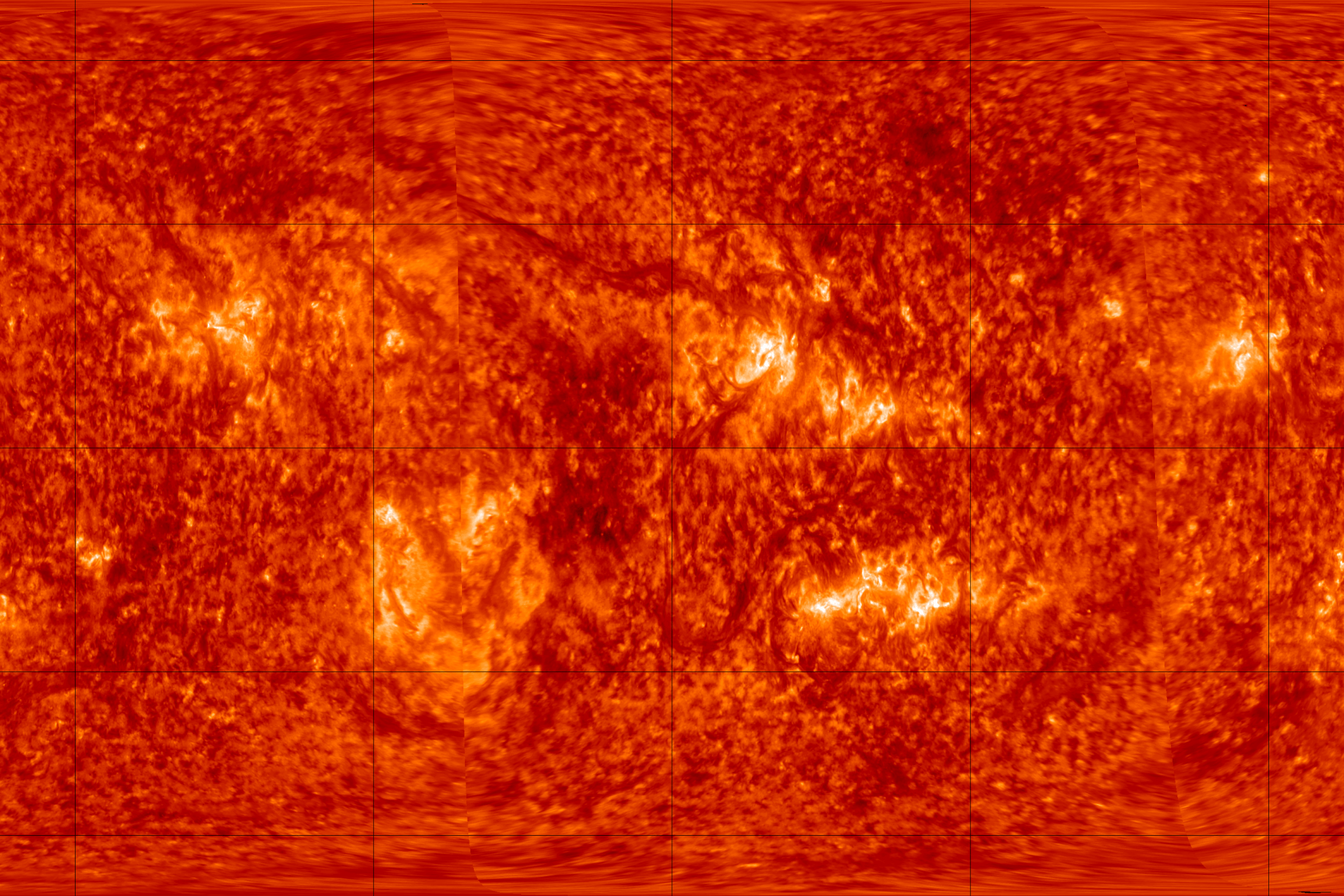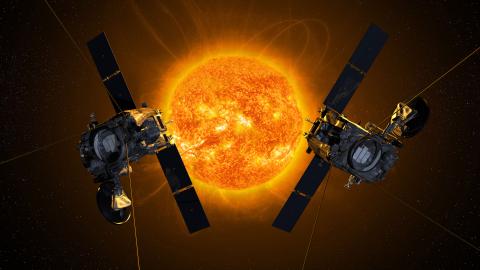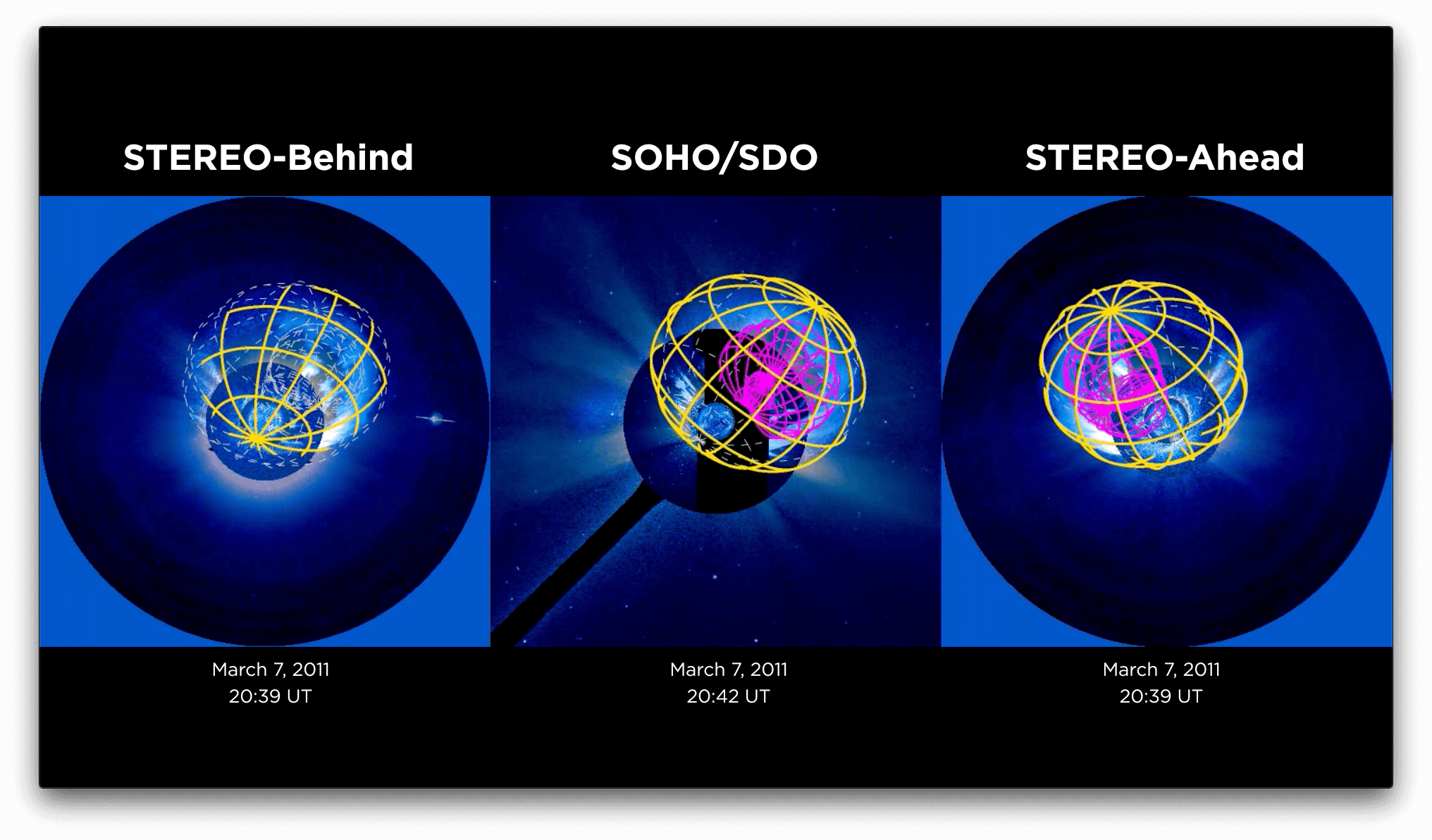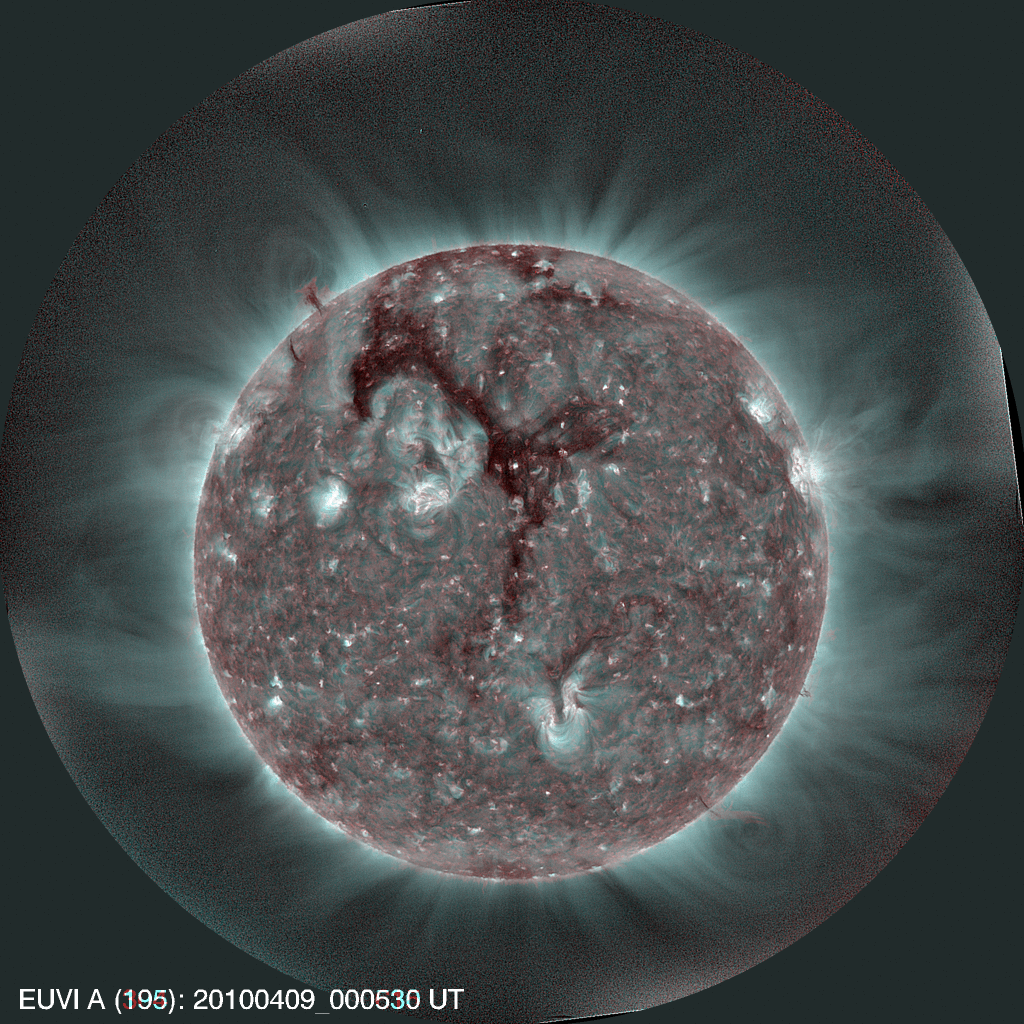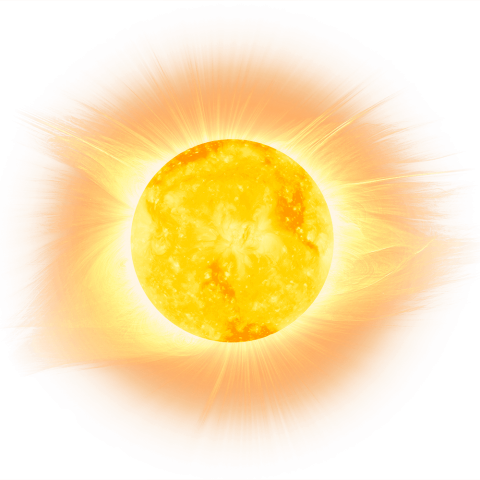Mission
While scientists long appreciated the power and importance of coronal mass ejections (CMEs), they didn’t fully understand how they form, what their structure and sizes are, or how they evolve as they blast off the Sun and propagate through space.
Launched in 2006, the STEREO mission is addressing these unknowns and providing advance warnings for space weather forecasting. STEREO is the third mission in NASA’s Solar Terrestrial Probes program, answering fundamental questions about the nature of space and the flow of matter and energy throughout the solar system.
The mission consists of two nearly identical space-based observatories: STEREO-A and STEREO-B, both built by APL. One spacecraft is placed ahead of Earth’s orbit while the other is placed behind, allowing the probes to capture 3D images of the Sun and interplanetary space to study the origin, propagation and evolution of CMEs. This configuration also enabled investigations of the 3D structure of the magnetic fields in the corona as well as the first studies of the entire Sun, including its far side.
Communications with STEREO-B were officially lost in September 2014. STEREO-A remains operational.



